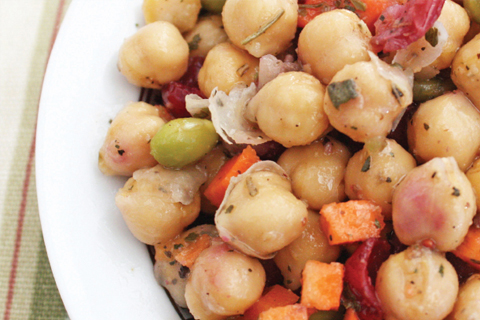Cleaning Out Toxins

Are you entertaining thoughts of a post-holiday detox to start off the New Year? Detox diets have been around for decades, but celebrities have brought them into the mainstream over the past several years. What is the science behind detoxing? Surprisingly, there are very few reliable studies that have looked at the pros or cons of detoxification diets, perhaps because there is such variability in nutritional methods used to detoxify.
For this article, I have only considered nutritional principles that support your body’s own detoxification system—your liver, kidney, and lungs. All day, your body is exposed to toxins—from BPA in credit card receipts and pesticides in your food to fumes from paint and dry cleaning solutions. While your body is well suited to eliminate many toxins, Dr. Patricia Fitzgerald points out in her article “Detox Demystified: Fad, Fact, or Fiction?” that “we are living in an unprecedented time on the planet in terms of toxins.” According to Dr. Gerald E. Mullin, associate professor of medicine at Johns Hopkins, there are different reasons why some people retain more toxins then others. Factors such as individual exposure, genetic differences, nutrient deficiencies, heavy metals, and intestinal overgrowth can affect your individual ability to detoxify toxins.
I recently attended a fascinating seminar hosted by Dr. Mullin and Kathie Swift, M.S., R.D.N., L.D., on the nutritional approaches to detoxification. Swift has developed six principles for nutritional detox that are known by the clever acronym REBOOT.
Reduce toxic exposure by eliminating unnecessary chemicals and substances from your diet. How do you know what to cut out? Check out the “Dirty Dozen” and “Clean 15” lists published by Environmental Working Group. As organics are generally more expensive, try to choose organic options for the produce you eat most often. For example: Apples are at the top of the “Dirty Dozen” list so, if you eat apples every day, spending money on organic apples makes sense.
-
- Swap out your plastic for BPA-free containers or glass, and don’t microwave in plastic. Credit card receipts are another source of BPA, so opt to pass on the receipt or have it emailed to you if possible.
-
- Reduce your consumption of fish that is high in mercury (tuna, swordfish, shark, king mackerel, and tilefish), and investigate safer sources of omega-3 fatty acids.
-
- Drink alcohol in moderation (no more than two drinks per day for men and one drink per day for women).
-
- Reduce highly processed foods, artificial ingredients, food dyes, GMOs, hydrogenated oils, and pesticides.
Eliminate offending food allergens. Common food allergens are wheat, tree nuts, milk, egg, soy, fish, and shellfish. Reduce food intolerances; check out October’s Austin Fit Magazine article “Could Gluten be Your Problem?” to learn more about gluten intolerance.
Boost fiber and fluids to reduce absorption of toxicants. Toxins are generally stored in body fat; as you break down body fat through weight loss, you are actually increasing the amount of toxins circulating in your body. Increasing water and fiber consumption helps eliminate these toxins. Drink purified water and increase fiber by eating more beans, nuts, and seeds.
Optimize dietary antioxidant defense and detoxifying substances. Eat more glutathione-, thiol-, and sulfur-containing foods, such as raw asparagus, vine-ripened tomatoes, avocado, citrus, whey protein, garlic, and onions. In addition, increase foods rich in B vitamins, such as dark leafy greens, beans, eggs, fish, and poultry.
-
- Antioxidants are vital in the detoxification process. You can find the antioxidant value of foods by visiting oracvalues.com.
-
- Minerals (such as Ca, Fe, Zn, Mn, and Se) may help decrease absorption of heavy metals.
-
- Consume foods high in vitamin E and C: wheat germ, almonds, peanut butter, sweet red pepper, oranges, and strawberries.
-
- Green tea, curcumin, and milk thistle are useful antioxidants for the liver.
Optimize fuel sources of macronutrients by increasing consumption of non-starchy vegetables. Make antioxidant-rich vegetables, such as those just listed, cover at least half of your plate at meals. (Lean protein should compose another quarter of your plate, and whole grains the remaining quarter.)
Tailor your diet, supplements, and supportive healing modalities. Consult with a registered dietitian/nutritionist (RDN) to ensure that any supplements you are taking don’t interfere with any medications and that you aren’t taking more than what is recommended. Use exercise, yoga, Qigong, and other therapies to encourage your body’s healing modality.
Detoxification doesn’t have to be a dramatic process; you can slowly make changes if it suits your lifestyle. By increasing consumption of food high in vitamins, minerals, and antioxidants, as well as by lessening your exposure to environmental toxins, you can optimize your body’s own natural detoxification process.






